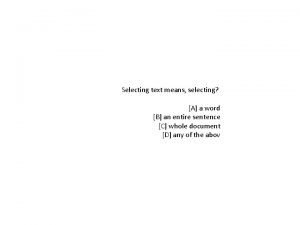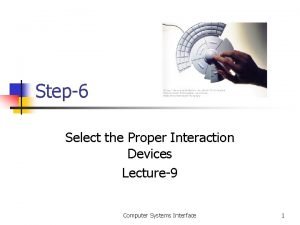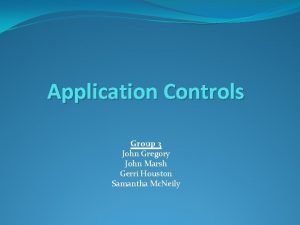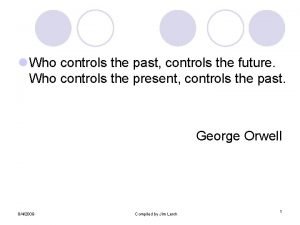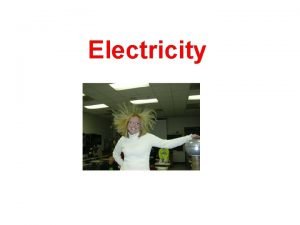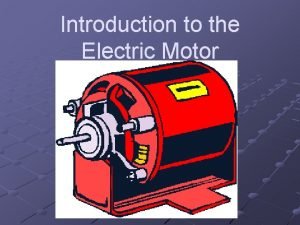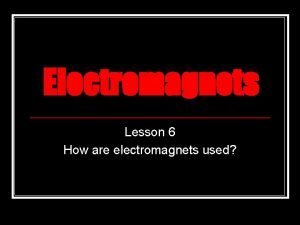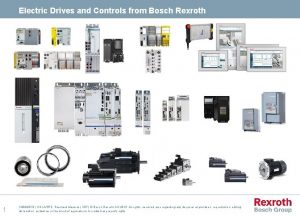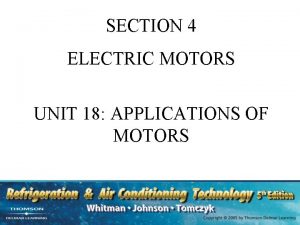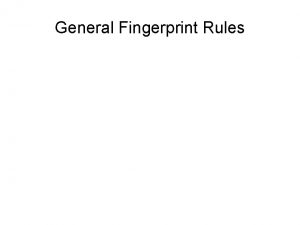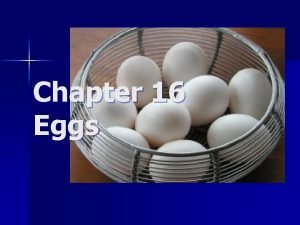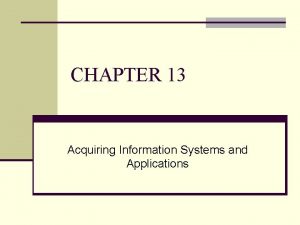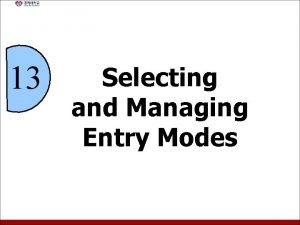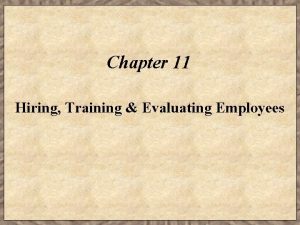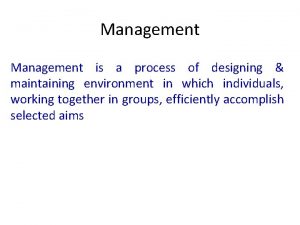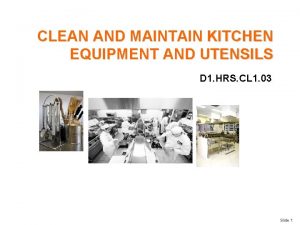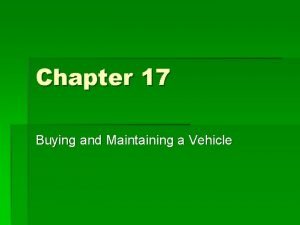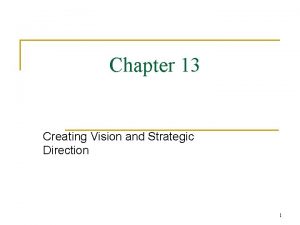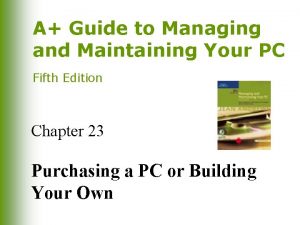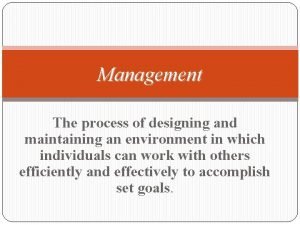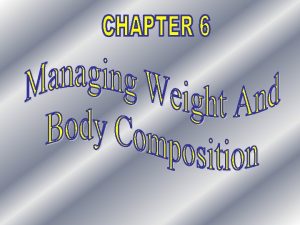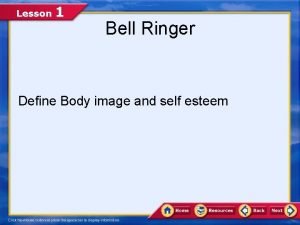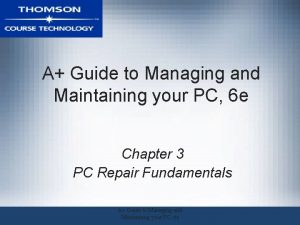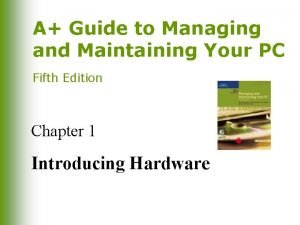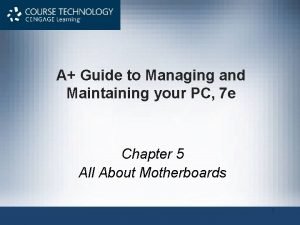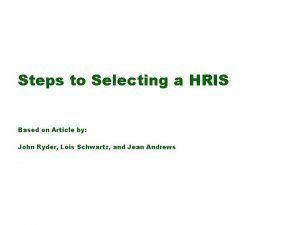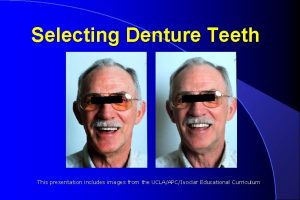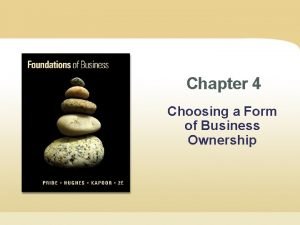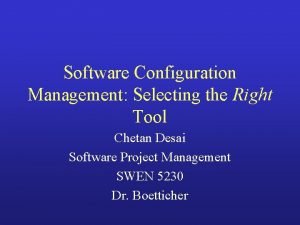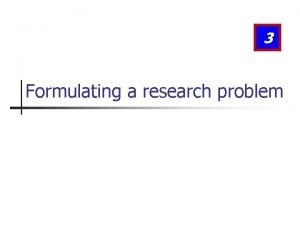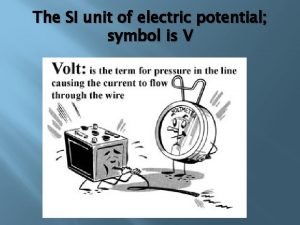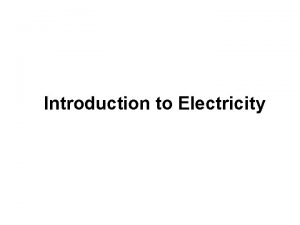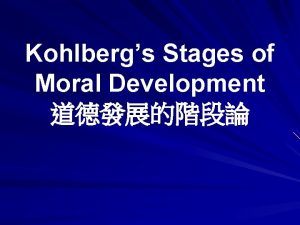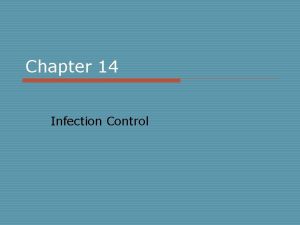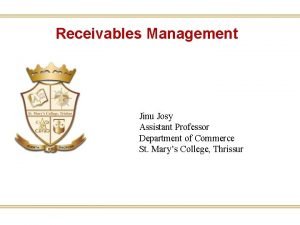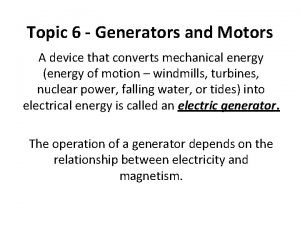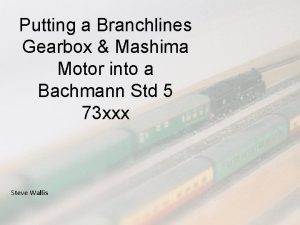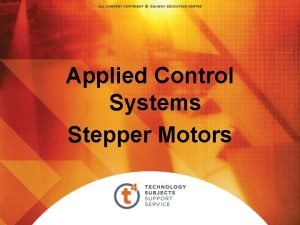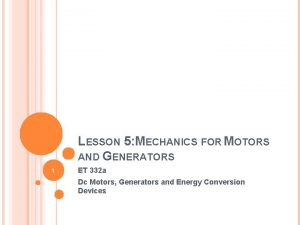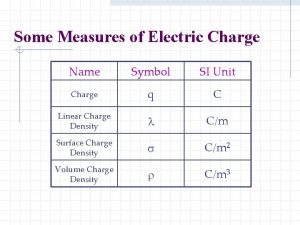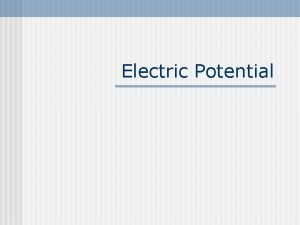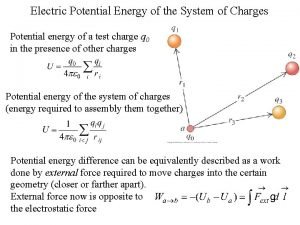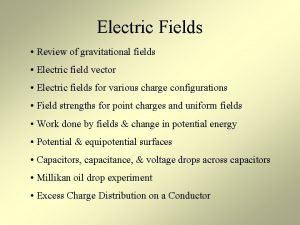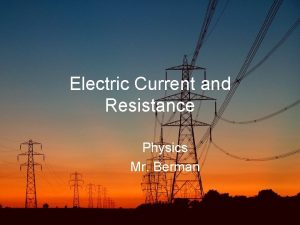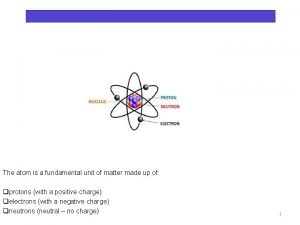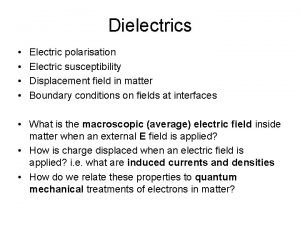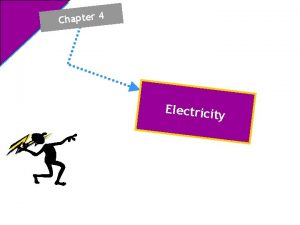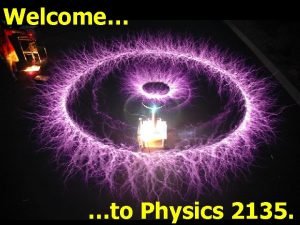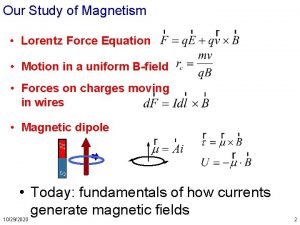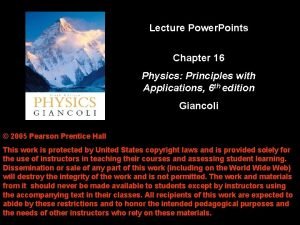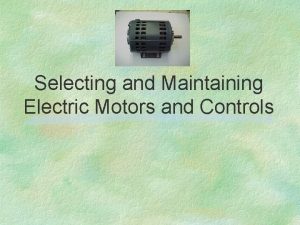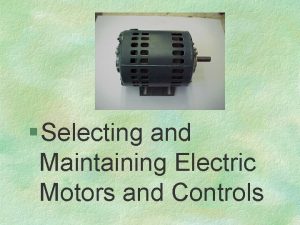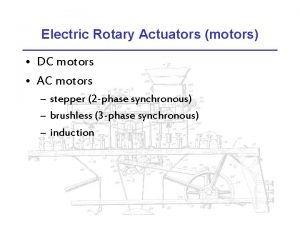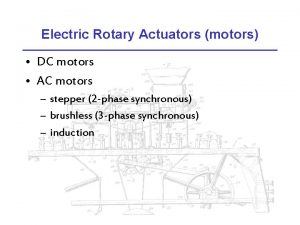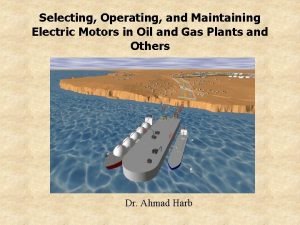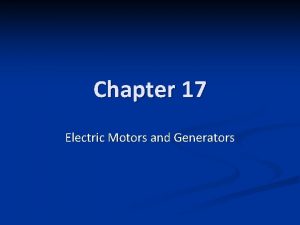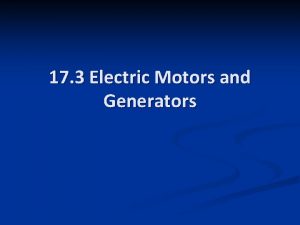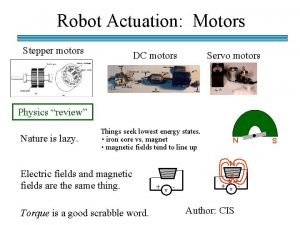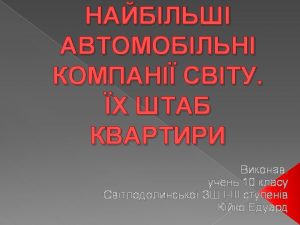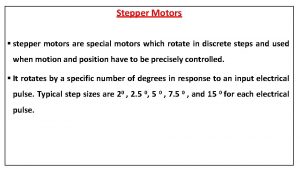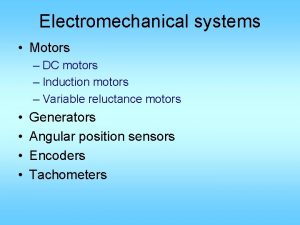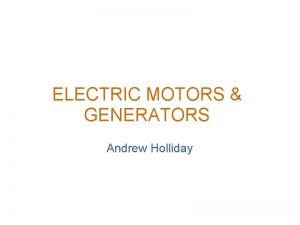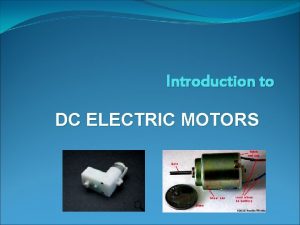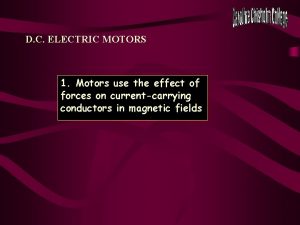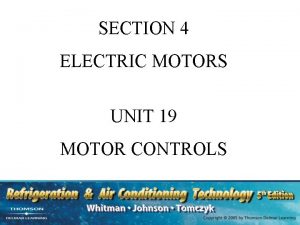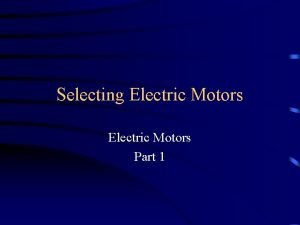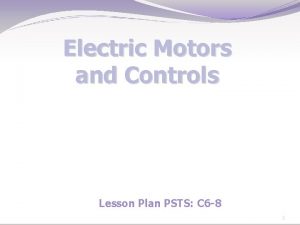Selecting and Maintaining Electric Motors and Controls Unit













































































































- Slides: 109

Selecting and Maintaining Electric Motors and Controls

Unit A Mechanical Systems and Technology

§ Selecting and Maintaining Electric Motors and Controls

Next Generation/Common Core Standards Addressed! § § § CCSS. ELA Literacy. RST. 9‐ 10. 1 Cite specific textual evidence to support analysis of science and technical texts, attending to the precise details of explanations or descriptions. CCSS. ELA Literacy. RST. 9‐ 10. 3 Follow precisely a complex multistep procedure when carrying out experiments, taking measurements, or performing technical tasks, attending to special cases or exceptions defined in the text. CCSS. ELA Literacy. RST. 9‐ 10. 7 Translate quantitative or technical information expressed in words in a text into visual form (e. g. , a table or chart) and translate information expressed visually or mathematically (e. g. , in an equation) into words. CCSS. ELA Literacy. RST. 11‐ 12. 2 Determine the central ideas or conclusions of a text; summarize complex concepts, processes, or information presented in a text by paraphrasing them in simpler but accurate terms. CCSS. ELA Literacy. RST. 11‐ 12. 3 Follow precisely a complex multistep procedure when carrying out experiments, taking measurements, or performing technical tasks; analyze the specific results based on explanations in the text. HSNQ. A. 1 Use units as a way to understand problems and to guide the solution of multi‐step problems; choose and interpret units consistently in formulas; choose and interpret the scale and the origin in graphs.

Bell Work/Student Learning Objectives § Identify and explain the advantages of electric motors. § Describe factors to consider in selecting electric motors. § Describe the basic parts of an electric motor. § Discuss the basic types of electric motors and their differences.

Bell Work/Student Learning Objectives § Identify and describe the different types of motor enclosures. § Describe the proper maintenance and care principles for electric motors. § Describe the importance of electrical controls in agriculture. § Describe the proper maintenance principles for electrical controls.

Terms § Cap screws § Capacitor motors § Capacitor-start, Capacitor-run motors § End shields § Explosion-proof motors § Frame § Open enclosures § Permanent-split capacitor motors

Terms § Repulsion-start induction run motors § Rotor § Shaded-pole motors § Soft-start motors § Splash-proof enclosures § Split-phase motors § § § Stator Synchronous motors Three-phase motors Through bolts Totally enclosed motors § Universal motors

Interest Approach § Here are 3 different examples of electric motors. How are these motors different? § Identify the various uses or applications of electric motors around your home and/or shop. § Explain the importance of electric motors in our daily lives and the importance of controlling them with various controls. § Identify various types of electrical controls that may be used around your home and/or shop.

What are the advantages of using electric motors over other sources of power? § Electric motors offer many advantages when compared to many other sources of power such as small gasoline engines or gasoline or diesel power units.

Advantages include: § Low Initial Investment § Electric motors may not be cheap, but when you consider the amount of work they accomplish, their cost is relatively low. l They are lower in cost because they are mass-produced, have few moving parts, and are simple in construction.

Inexpensive to operate § While electricity is not cheap, if you consider what it costs to accomplish various tasks, the cost is low. § One kilowatt hour of electricity costs somewhere around $. 10/k. Wh. l One kilowatt hour of electricity will provide enough power to pump over 1, 000 gallons of water or supply air pressure to paint 700 square feet of surface.

Efficient § Many electric motors operate at 85 percent efficiency or higher. § Some 3 -phase motors may operate at 93 percent efficiency.

Electric Power!

Simple to operate § May be started or stopped by flicking a switch, pushing a button, moving a lever, or automatically by an electrical control. § Almost immediate full power, no gradual acceleration.

Little servicing required § Usually restricted to occasional cleaning and lubrication.

Operate quietly § They operate smoothly, quietly, and with little vibration.

Compact in size § Usually much smaller than the machine they operate as well as other sources of power.

Long life § They have few moving parts, do not vibrate excessively, and are lubricated efficiently. § As a result, many remain in service 30 years or longer.

Ready to operate § Start in extreme winter cold or severe summer heat. § One Electric Motor per wheel!

Will start a reasonable load § Many electric motors are designed to start under load, which eliminates the need for a clutch or transmission.

Will tolerate temporary overloading § They are designed to carry up to one and a half times their rated capacity for short periods.

Automatically controlled § This is important for operating heating, refrigeration, and ventilation equipment.

Remotely controlled § They have the capacity to be controlled from great distances, which provides convenience, and safety of operation of electrical equipment.

Adaptable § They may be moved from one operation to another by remounting the motor and changing the pulley and the belt. § The direction of rotation is usually reversible as well.

Portable § They are light, easily moved, and readily mounted so they may be taken to the job.

Safe to operate § They are designed to prevent the operator from coming into contact with live wires or other electrical parts. § They use no volatile fuel, give off no dangerous exhaust gases or fumes, have no hot exhaust manifold, and have no open gears to provide a safety hazard to operator or others.

What factors should be considered in selecting electric motors?

Type of electrical power available § AC (alternating current) may be 120, 240, or 208 voltage. § AC may be single-phase or threephase.

Size of motor § Horsepower ranges differ depending on type of motor. Shaded-pole motors range from 1 /500 to ½ hp, split-phase motors range from 1 /20 to ¾ hp l Capacitor-start motors range from 1 /8 to 10 hp l Three-phase motors range from ¼ to 500 hp or larger. l

Starting load § Some loads are easy to start, such as fans or grinding wheels. § There is usually little or no load until the motor reaches full speed. l Some loads require more effort to start than to keep running, such as piston-type water pumps, air compressors, and refrigeration units.

Speed requirements § Some equipment requires higher operating speeds than other equipment. § Although, some regulation of speed can be accomplished through pulley selection, motors should be selected to match closely to the speed needed.

Type of bearings § Depending on size and type, motors may provide a choice between sleeve bearings or ball bearings. § There may also be several methods of lubricating the bearings.

Type of mounting § The type of base or method of mounting an electric motor may depend upon the load it drives. Some may have a resilient mounting allowing for some flexibility l Some are mounted directly to the machine. l Still others may have a mounting bracket welded to the motor housing. l

Various Mountings

Environment § Motor enclosures must be selected according to the environment in which they will operate, such as dusty, dirty, or wet conditions. § Some may operate in the presence of explosive vapors.

Efficiency § Select a motor that operates at high efficiency.

STUDENT ACTIVITY Complete the Lab sheet “Reading an Electric Motor Nameplate”


What are the basic parts of an electric motor?

Electric Motor Parts § Electric motors are relatively simple in design and contain only a few basic parts. § They consist essentially of a rotating part called the rotor that revolves freely within a stationary part called the stator.

Electric Motor Parts

The rotor § Consists of a slotted core, made up of thin sections of a special soft steel, care-fully balanced on a central shaft. § There are two types of rotors:

The rotor

1. A squirrel-cage rotor § Has slots that contain bare copper, brass, or aluminum bars which are short-circuited together at each end by end rings. § They also contain a centrifugal device for operating the startingswitch mechanism.

2. A wound-rotor § Used in a repulsion-start induction motor, has coils of insulated copper wire wound in the rotor slots. § It has a commutator made up of copper segments. l Each segment is insulated from the other segment and the ends are soldered to individual commutator segments.

2. A Wound-Rotor § When the brushes contact these segments, they complete the circuit, thus permitting currents to flow through all of the coils in the rotor in the proper sequence for starting. l They contain a centrifugal device for short-circuiting all the commutator segments when running.

The Stator § The stator, or stationary part, has insulated copper wire wound in slots to form one or more pairs of magnetic poles. § It is mounted to the frame.

The Stator

Other Parts § The frame provides for mounting the motor when it is in use. Could also be referred to as the motor housing.

Other Parts § The end shields house the bearings for the rotor and one end shield contains the starting switch, brushes, and electrical connections.

What are the basic types of electric motors and how are they different?

Electric motors are different in how they start, operate, and the amount of power they are able to provide.

Shaded-pole motors § Are constructed simply, are low cost, and have low starting torque. § They are not electrically reversible and have low efficiencies. § They are used for small, light loads such as small fans.


Split Phase Motors

Split-phase motors § Are simple in construction and relatively low in cost. § Have a low starting torque and require a high starting current. § Are limited for use on loads that are easy to start.

Split-phase motors § Are seldom used in sizes larger than 1 /3 hp. § Are made for either 120 or 240 volt current & are not readily changed from one to the other.


Capacitor motors

Capacitor motors § Have starting and running windings in the stator and have squirrel-cage rotors. § Account for the majority of electric motors sold for farm use.

Capacitor motors § Are a variety of types of capacitor motors. § Are used for hard to start loads such as water pumps or air compressors.

Capacitor-start motors § They have a capacitor placed in series with the starting winding. § The capacitor is often in a tubeshaped container on the top of the motor.

Capacitor-start motors § The capacitor in the starting winding circuit gives these motors greater starting and accelerating torque for the same starting current, usually at least twice as great as a split-phase motor of the same horsepower rating.

Capacitor-start motors § These are used on hard-to-start loads. § They range in size from 1 /8 hp to 10 hp and generally can be connected to either 120 or 240 volts.

Capacitor-start motors


Capacitor-start, capacitor-run motors § Have a capacitor which stays in series with the starting winding while the motor runs. § The starting switch removes only the starting capacitor from the circuit, leaving the starting winding operational.

Capacitor-start, capacitor-run motors § These operate more efficiently because they require lower line current when running. § They also have slightly higher starting torque than capacitor-start motors.


Permanent-split capacitor motors § Use the same value of capacitance in both starting and running windings. § They have very low starting torque and no starting mechanism.


Repulsion-start induction run motors § Have the same high starting torque as the capacitor start motors and can be used for the same type of loads. § They are heavy-duty motors and can be operated on either 120 or 240 volts.

Repulsion-start induction run motors § They have more moving parts, have a higher first cost, and require more maintenance. § They are available from 1 /6 hp to 10 hp. § Reversing is accomplished by shifting the position of the brushes.


Universal motors § Are normally found as component parts on portable power tools or appliances. § Sizes range from 1 /150 hp to 2 hp.


Three-phase motors § Are very simple in construction, have few moving parts, and require a minimum of maintenance. § They have high starting torque and are used for difficult to start loads.

Three-phase motors § Their size ranges from ¼ hp to as high as 500 hp. § They are easily reversed by switching any two of the three line leads

Synchronous motors § Are found on clocks and timers and must be replaced with a new motor of the same kind if they fail.


Soft-start motors § May be useful for applications requiring large motors, but needing only a very low starting torque. § These are single-phase motors, but if three-phase power is available, it is best to use a three-phase motor.


What are the different types of motor enclosures and how are they different?

It is important to select the correct type of motor enclosure depending on the environment in which the motor will operate.

Open enclosures § Are designed for use indoors where the motor will be kept dry and clean. § Openings for ventilation are usually of dripproof design, which prevents objects or liquids from falling into the motor. § They are sometimes referred to as drip-proof motors.

Splash-proof enclosures § May be used indoors or outdoors in mild climates. § They may be washed with a hose without water reaching important parts inside the motor. § They are usually found on motors over ¾ hp.

Totally enclosed motors § Are recommended for extremely dirty conditions. § This enclosure protects the motor from dust, dirt, grit, and moisture in the atmosphere.

Explosion-proof motors § Are manufactured in two totally enclosed types of enclosures. § One will withstand an explosion of gas or vapor inside it without igniting the gas or vapor surrounding it. § They are used around gasoline and similar explosive vapors.

Explosion-proof motors § The other is designed and built so that it will not cause ignition or explosion of a hazardous dust concentration on or around the motor. l They are often found in grain elevators, feed mills or flour mills where hazardous concentrations of dust are present in the air.

What are proper maintenance and care principles for electric motors?

Electric motors can provide years of trouble-free service if they are properly maintained and cared for. Some basic care principles are:

Cleaning § Should take place at least once a year and more often if used in extreme conditions. § Always clean the outside before disassembling the motor. § A soft brush and a vacuum cleaner may be used to loosen and remove dust and foreign material.

Cleaning § Compressed air may be used if pressure is kept below 25 psi. § Grease or oil may be removed with a cleaning solvent and a brush. § After all parts have been cleaned, they should be dried with a clean cloth.

Lubricating § Lubricating the motor with the proper lubricant, in the correct amount, and at the proper time intervals is important. § Follow manufacturers’ recommendations.

Storage § Storage is also important. § Motors should be stored in a dry place and kept free from dirt.

Storage § To prepare a motor for storage, the following steps are important: l l Wipe the outside free of all dirt and grease. Check the bearings for lubrication and add fresh oil or grease as required. Cover the shaft extension with a coating of grease to prevent rusting. Wrap the motor with heavy paper to protect it from dust, dirt, and moisture from condensation.

Idle Motors § If motors remain idle for long periods time, they should be turned on and operated for a 15 -minute period every couple of weeks. § This allows the motor to warm up and dry out any moisture that may have accumulated. § It also lubricates the bearings.

Why are electrical controls important in agriculture? § Electric motors must be controlled in a way that their power is used when and where it is needed. § They must be used in the most efficient and economical way possible.

Why are electrical controls important in agriculture? § The system must provide safety for the operator, the motor, and the equipment being operated. § The primary purpose of electrical controls and motors is to save labor through automation.

Examples of uses of electric motors and controls Labor saving equipment used to: § move grain and feed § to milk dairy cattle § feed and water livestock § handle waste § ventilate buildings § dry grain.

Controls may also be used without being associated with electric motors. § One example includes photo cells used to control security lights. § Other examples include smoke alarms and trigger alarms in security systems. § Greenhouse operators regulate light levels and misting systems with electrical controls.

Automation depends on extensive use of time switches, thermostats, pressure switches, humidistats, and other devices used to start and stop electrical equipment without the constant attention of the operator.

If properly maintained, electrical controls should provide years of trouble-free service. Basic maintenance that should be done includes:

Basic Maintenance § Cleaning the controls so heat does not build up and moisture does not accumulate. l Free circulation of air is necessary for efficient operation of many controls, especially thermostats and humidity controllers. § Wiping the sensing element with a clean cloth to remove any oil film.

Basic Maintenance § Checking contacts for rough surfaces and remove rough projections with a fine file. § Keeping oil and grease away from electrical controls.

Summary/Review § Identify and explain the advantages of electric motors. § Describe factors to consider in selecting electric motors. § Describe the basic parts of an electric motor. § Discuss the basic types of electric motors and their differences.

Summary/Review § Identify and describe the different types of motor enclosures. § Describe the proper maintenance and care principles for electric motors. § Describe the importance of electrical controls in agriculture. § Describe the proper maintenance principles for electrical controls.

The End! 1938 News!
 Selecting text means
Selecting text means Guidelines for selecting proper device based controls
Guidelines for selecting proper device based controls General controls vs application controls
General controls vs application controls He who controls the past controls the future
He who controls the past controls the future Electric current flows in
Electric current flows in It is a pair of plates attached to the axle
It is a pair of plates attached to the axle How are electromagnets used in doorbells
How are electromagnets used in doorbells Bosch rexroth electric drives and controls
Bosch rexroth electric drives and controls Unit 18 application of motors
Unit 18 application of motors Energy of an electric field
Energy of an electric field Electric field from electric potential
Electric field from electric potential Electric potential of dipole
Electric potential of dipole Chapter 21 electric charge and electric field
Chapter 21 electric charge and electric field Chapter 21 electric charge and electric field
Chapter 21 electric charge and electric field Unit of charge
Unit of charge Dc o/d per item charge
Dc o/d per item charge Electric charges and electric forces lesson outline
Electric charges and electric forces lesson outline Electric potential
Electric potential A suitable electric pump in an electric circuit is a
A suitable electric pump in an electric circuit is a Screening and selecting employees international
Screening and selecting employees international What are the rules in the selection of delta?
What are the rules in the selection of delta? Project identification and selection process
Project identification and selection process Selection and storage of eggs
Selection and storage of eggs Acquiring information systems and applications
Acquiring information systems and applications Potential market
Potential market Recruiting and selecting sales personnel
Recruiting and selecting sales personnel Selecting organizing and interpreting information
Selecting organizing and interpreting information Selecting a topic and purpose
Selecting a topic and purpose The process of selecting training and evaluating employees
The process of selecting training and evaluating employees Chapter 5 selecting a topic and a purpose
Chapter 5 selecting a topic and a purpose General purpose specific purpose central idea
General purpose specific purpose central idea Principles of records and reports
Principles of records and reports The process of designing and maintaining an environment
The process of designing and maintaining an environment Building and maintaining a website
Building and maintaining a website Part of kitchen premises
Part of kitchen premises Identify components of a retail image.
Identify components of a retail image. Advantages of curving traffic pattern
Advantages of curving traffic pattern Chapter 17 maintaining your vehicle
Chapter 17 maintaining your vehicle Maintaining a healthy body composition and body image
Maintaining a healthy body composition and body image Vision focuses on the current reality and maintaining it
Vision focuses on the current reality and maintaining it Purchasing and maintaining a computer
Purchasing and maintaining a computer The process of designing and maintaining an environment
The process of designing and maintaining an environment Maintaining a healthy body composition and body image
Maintaining a healthy body composition and body image Building and maintaining customer relationships
Building and maintaining customer relationships Restoring lost body fluids
Restoring lost body fluids Maintaining a healthy body composition and body image
Maintaining a healthy body composition and body image Guide to managing and maintaining your pc
Guide to managing and maintaining your pc Guide to managing and maintaining your pc
Guide to managing and maintaining your pc Guide to managing and maintaining your pc
Guide to managing and maintaining your pc Unit 10, unit 10 review tests, unit 10 general test
Unit 10, unit 10 review tests, unit 10 general test How to choose a hris
How to choose a hris Investment risk example
Investment risk example Non anatomic teeth
Non anatomic teeth The logical view of a database:
The logical view of a database: Chapter 9 driving in urban traffic answers
Chapter 9 driving in urban traffic answers Selecting investment in global market
Selecting investment in global market Choosing brand elements
Choosing brand elements The circular chart used to remember color relationships is?
The circular chart used to remember color relationships is? Chapter 7 selecting the channel members
Chapter 7 selecting the channel members Channel member selection
Channel member selection Selecting major appliances
Selecting major appliances Chapter 4 choosing a form of business ownership
Chapter 4 choosing a form of business ownership Selecting the promotional mix
Selecting the promotional mix Criteria for selecting the right scm tool is based on
Criteria for selecting the right scm tool is based on Pitfalls in selecting new ventures
Pitfalls in selecting new ventures Selecting an overall positioning strategy
Selecting an overall positioning strategy A process of receiving selecting organizing
A process of receiving selecting organizing Considerations in selecting a research problem
Considerations in selecting a research problem Si unit of electric potential
Si unit of electric potential Charge symbol and unit
Charge symbol and unit How to maintain your deliverance
How to maintain your deliverance Maintaining a professional image
Maintaining a professional image Class maintaining suffixes
Class maintaining suffixes Chapter 15 infection control
Chapter 15 infection control Extreme harmful eating behaviors
Extreme harmful eating behaviors Potential tension between maintaining confidentiality
Potential tension between maintaining confidentiality Having a teachable spirit in the bible
Having a teachable spirit in the bible Maintaining a website
Maintaining a website Access module 3 maintaining a database
Access module 3 maintaining a database Social order maintaining orientation
Social order maintaining orientation Maintaining effective partnerships
Maintaining effective partnerships Maintaining state in web applications
Maintaining state in web applications Maintaining transmission based isolation precautions
Maintaining transmission based isolation precautions Ways to maintain ecological balance
Ways to maintain ecological balance Cost of maintaining receivables
Cost of maintaining receivables What is maintaining an internal balance
What is maintaining an internal balance Maintaining student privacy
Maintaining student privacy Data integrity in oracle
Data integrity in oracle Maintaining curiosity
Maintaining curiosity Maintaining information systems
Maintaining information systems Lesson 6 dc generators and motors
Lesson 6 dc generators and motors Mashima motor
Mashima motor Step motors and control systems
Step motors and control systems Abb motors and generators
Abb motors and generators Torque
Torque Nascar motors assembles and sells motor vehicles
Nascar motors assembles and sells motor vehicles Gauss law symbol
Gauss law symbol Gpe= mgh
Gpe= mgh Electric potential unit
Electric potential unit Unit of potential
Unit of potential Electric field si units
Electric field si units Units of electric current
Units of electric current Si unit of electric charge
Si unit of electric charge Electric displacement
Electric displacement An amp is a unit of electric cosmetology
An amp is a unit of electric cosmetology Magnetic flux density and magnetic field
Magnetic flux density and magnetic field Electric field intensity formula
Electric field intensity formula Lorentz force calculator
Lorentz force calculator Unit of electric charge
Unit of electric charge Formula of electric field
Formula of electric field
